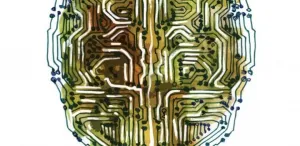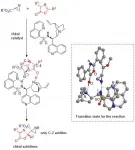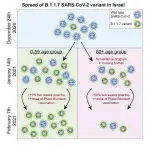(Press-News.org) Embargoed press materials are now available for the virtual Experimental Biology (EB) 2021 meeting, featuring cutting-edge multidisciplinary research from across the life sciences. EB 2021, to be held April 27-30, is the annual meeting of five scientific societies bringing together thousands of scientists and 25 guest societies in one interdisciplinary community.
Complete a Press Registration Form for complimentary meeting registration and full access to our virtual newsroom. We encourage advance registration as it may take up to a day to receive access.
Join Our Virtual Press Conference
Reporters are invited to join a live Q&A discussion of selected research announcements during a virtual EB press conference held online from 1-1:45 p.m. EDT on Monday, April 26, 2021 (RSVP by Friday, April 23). The press conference will feature the following five research highlights:
Taking Vitamin D Could Lower Heart Disease Risk for People with Dark Skin
Racial disparities in heart disease may be linked to vitamin D deficiency
Could Heart Medications Increase COVID-19 Risk?
Mouse study takes tissue-specific look at how blood pressure medications affect SARS-CoV-2 receptors
How Did Dinosaurs Deliver Bone-Crushing Bites? By Keeping a Stiff Lower Jaw.
New research addresses longstanding mystery on the anatomy of the Tyrannosaurus rex jaw
Cell Study Suggests Pesticide Exposure May Increase COVID-19 Susceptibility
Inflammation-induced mechanism might be linked with higher infection risk for veterans and people with metabolic disorders
Researchers Work to Increase Number of Transplantable Livers
New findings lay groundwork for turning previously unusable donor livers into transplantable organs
Additional Press Materials
Find these materials and more at our virtual newsroom:
New COVID-19 Research
Gene Changes Might Explain Long-Haul COVID-19 Symptoms
Airway cells exposed to SARS-CoV-2 spike protein exhibited persisting changes in gene expression
SARS-CoV-2 Spike Protein Alone May Cause Lung Damage
New mouse model makes it easier and safer to study COVID-19 lung injury
Study Illuminates How COVID-19 Worms Its Way into the Brain
Research helps explain baffling neurological symptoms--and why they're so unpredictable
Five New Insights in the Fight Against COVID-19
Researchers announce new findings on treatments, health impacts and repercussions for science education
Researchers Design Sensor for Fast, Inexpensive On-Site Ebola Detection
Sensor technology requires no special storage; could also be useful for detecting COVID-19
Urine of COVID-19 Patients Could Predict Who Will Develop Severe Disease
Inflammatory markers were higher in people with high blood pressure and diabetes
Our Natural World
Could Corals Use Sound to Communicate?
New evidence suggests corals may have genes involved in receiving or emitting sound
How Does a Nose Evolve into a Blowhole? Study Suggests There's More than One Way
Toothed and baleen whales show different patterns of blowhole development
Brain Development Is Surprisingly Similar between Humans and Other Primates
Study offers first comprehensive view of brain maturation across species
Staying Healthy
'Smart Shirt' Takes a Trip to Space for Science
High-tech shirt non-intrusively monitors astronauts' health during spaceflight
Why Older People Should Chill When It's Hot Out
Cooling off during extreme heat appears to help preserve cellular defenses
Researchers Uncover Potential New Way to Treat Dry Mouth
PDE4 inhibition induces salivation in mice; findings might also have implications for cystic fibrosis
Compound Found in Some Vegetables May Reduce Diabetes-Related Kidney Damage
Phenethyl isothiocyanate, derived from watercress and other cruciferous vegetables, shows benefits in rats
Omega-3 Supplements Help Kids with High Cholesterol Improve Lipid Profile
Fatty acid supplementation could fend off later heart disease in high-risk children
Prolonged Exposure to Extreme Heat and Humidity Increases Risk of Acute Kidney Injury
Findings could help future treatment and prevention measures
Heart Health
Depression Medication Could Also Protect Against Heart Disease
Researchers show antidepression drug also protects against clot formation in human blood
Potential Advancements in Treatment of PTSD and PTSD-related Cardiovascular Disease
Researchers explore renin-angiotensin system gene function for memory processing
Treating Cancer
Capsaicin Analog Could Help Treatment-Resistant Lung Cancer
Small cell lung cancer cells exposed to synthetic analog of chili pepper compound responded better to chemotherapy
Plant Compound Shows Promise Against Triple-Negative Breast Cancer
Cells from women with African American ancestry responded more strongly to the compound
Exercise Science
Got 10 Minutes? That's All You Need for this High-intensity Workout
Four-second cycling sprints improve exercise endurance and power
Dab on Deep Heat Cream to Improve Exercise Performance
Study finds boost in aerobic performance in athletes who used over-the-counter deep heat cream
Environmental Exposures
Five Studies Point to Dangers of Environmental Exposures
New research highlights surprising effects of invisible and often involuntary exposures
Exposure to Roundup® Extends Seizure-like Behavior in Roundworms
Findings have implications for human and environmental health
Other Medical News
Toward a Feasible Alternative to Liver Organ Transplant
New findings could lead to ways to keep transplanted adult liver cells functioning long term
Rapamycin May Exacerbate Age-related Arthritis Despite Life-extending Benefits
Rapamycin impairs mitochondrial function in guinea pig model
Using Big Data to Save Babies
Machine learning could detect lung disorder in preemies better than traditional diagnostics
Light Therapy Helps Veterans Treated for Traumatic Brain Injury
Lightbox improves cognitive function and mood in veterans with TBI, pilot study finds
Self-reported Daytime Sleepiness Is Associated with Telomere Shortening
Shorter telomere length was found in people without sleep apnea
Diabetes Drug Could Protect Against Dangerous Infection
Metformin inhibited C. diff spread in three study models
Contact: media@experimentalbiology.org
EB host societies are the American Association for Anatomy, American Physiological Society, American Society for Biochemistry and Molecular Biology, American Society for Investigative Pathology and American Society for Pharmacology & Experimental Therapeutics.
#expbio | EB on Facebook | EB on Twitter (@expbio)
INFORMATION:
Eyes play an important role in social communication by expressing the intentions of our interlocutors, and even more so in times of pandemic when half of the face is hidden. But is this eye contact automatic and rapid? Is it based on a priority attentional reaction or, on the contrary, on a particular emotional reaction? To answer these questions, researchers at the University of Geneva (UNIGE), Switzerland, looked at the way we process human gaze, focusing on the estimation of the temporal duration of social interactions. They discovered that when we make eye contact with another person, our attention is directly solicited, causing a distortion in our temporal perception. As a result, time seems shorter than it really is. ...
A biomimicking "spiking" neural network on a microchip has enabled KAUST researchers to lay the foundation for developing more efficient hardware-based artificial intelligence computing systems.
Artificial intelligence technology is developing rapidly, with an explosion of new applications across advanced automation, data mining and interpretation, healthcare and marketing, to name a few. Such systems are based on a mathematical artificial neural network (ANN) composed of layers of decision-making nodes. Labeled data is first fed into the system to "train" the model to respond a certain way, then ...
LA JOLLA, CALIF. - April 20, 2021 Scientists at Sanford Burnham Prebys have identified, at an atomic level, how a part of a protein called PLEKHA7 interacts with a cell's membrane to regulate important intercellular communications. The research, published in the journal Structure, points to hotspots within PLEKHA7 as targets for drugs. These targets could be key in designing treatments for advanced colon, breast and ovarian cancers.
The region, or domain, in PLEKHA7 that the researchers examined, pleckstrin homology (PH), is commonly found in proteins ...
A long-awaited, high-tech analysis of the upper body of famed fossil "Little Foot" opens a window to a pivotal period when human ancestors diverged from apes, new USC research shows.
Little Foot's shoulder assembly proved key to interpreting an early branch of the human evolutionary tree. Scientists at the END ...
Recent growth in the number of healthcare workers providing home care for Medicare patients is "small and inadequate" compared with the increasing demand in an aging America, a new study suggests.
To have hope of keeping up, Medicare likely will need to reconsider how it compensates providers for home care, the researchers say.
"Only 0.7 percent of physicians in Medicare provided home care regularly," said Nengliang "Aaron" Yao, PhD, a researcher with the University of Virginia School of Medicine's Section of Geriatric Medicine. "Targeted policies are needed to support home-based medical care."
Trends in Home Care
Growth in the field of home care was "modest but steady" between 2012 and 2016, with most of the growth coming from increasing numbers of nurse practitioners providing home ...
A novel system of chilled panels that can replace air conditioning can also help reduce the risk of indoor disease transmission, suggests new analysis from the University of British Columbia, University of Pennsylvania and Princeton University.
The researchers computed air conditioning requirements in 60 of the world's most populous cities--with the additional ventilation required due to COVID-19. Then, they compared the energy costs with their cooling method, using the chilled panels and natural ventilation.
The results, published in the COVID-19 edition of Applied Energy, showed that the alternative solution can save up to 45 per cent of the required energy, while ensuring building occupants are comfortable ...
Nearly three-quarters of Earth's land had been transformed by humans by 10,000BC, but new research shows it largely wasn't at the expense of the natural world.
A study involving University of Queensland researchers combined global maps of population and land use over the past 12,000 years with current biodiversity data, demonstrating the effective environmental stewardship of Indigenous and traditional peoples.
UQ's Professor James Watson said the findings challenged the modern assumption that human 'development' inevitably led to environmental destruction.
"There's a paradigm among natural scientists, conservationists and policymakers that ...
Unless you've studied chemistry in college, it's unlikely you've come across the name aziridine. An organic compound with the molecular formula, C2H4NH, aziridines are well-known among medicinal chemists, who make use of the compound to prepare pharmaceutical drugs such as Mitomycin C, a chemotherapeutic agent known for its anti-tumor activity. Specifically, aziridines are what chemists call "enantiomers"--molecules that are mirror images of each other and cannot be superposed on one another. A peculiarity with enantiomers is that the biological activity ...
A team headed by Dr. Phillip M. Maffettone (currently at National Synchrotron Light Source II in Upton, USA) and Professor Andrew Cooper from the Department of Chemistry and Materials Innovation Factory at the University of Liverpool joined forces with the Bochum-based group headed by Lars Banko and Professor Alfred Ludwig from the Chair of Materials Discovery and Interfaces and Yury Lysogorskiy from the Interdisciplinary Centre for Advanced Materials Simulation. The international team published their report in the journal Nature Computational Science from 19 April 2021.
Previously manual, time-consuming, error-prone
Efficient analysis of X-ray diffraction data (XRD) plays a crucial role in the discovery of new materials, for example for the energy ...
A new study at Tel Aviv University found that the British variant (termed: B.1.1.7) of Covid-19 is 45% more contagious than the original virus. The researchers relied on data from about 300,000 PCR tests for Covid-19 obtained from the COVID-19 testing lab, which was established in collaboration with the Electra Group.
The new study was conducted by Prof. Ariel Munitz and Prof. Moti Gerlitz of the Department of Clinical Microbiology and Immunology at the Sackler Faculty of Medicine, together with Dr. Dan Yamin and PhD student Matan Yechezkel from the Laboratory for Epidemic Modeling and Analysis (LEMA) at the Department of Industrial Engineering, all at Tel Aviv University. The study's results were published in the prominent scientific ...






